Related Research Articles
The Pere Marquette Railway operated in the Great Lakes region of the United States and southern parts of Ontario in Canada. It had trackage in the states of Michigan, Ohio, Indiana and the Canadian province of Ontario. Its primary connections included Buffalo; Toledo; and Chicago. The company was named after Père Jacques Marquette S.J. (1637–1675), a French Jesuit missionary who founded Michigan's first European settlement, Sault Ste Marie.

The Grand Trunk Western Railroad Company is an American subsidiary of the Canadian National Railway operating in Michigan, Illinois, Indiana, and Ohio. Since a corporate restructuring in 1971, the railroad has been under CN's subsidiary holding company, the Grand Trunk Corporation. Grand Trunk Western's routes are part of CN's Michigan Division. Its primary mainline between Chicago and Port Huron, Michigan serves as a connection between railroad interchanges in Chicago and rail lines in eastern Canada and the Northeastern United States. The railroad's extensive trackage in Detroit and across southern Michigan has made it an essential link for the automotive industry as a hauler of parts and automobiles from manufacturing plants.

The Pennsylvania-Reading Seashore Lines was a railroad that operated in southern New Jersey in the 20th century. It was created in 1933 as a joint consolidation venture between two competing railroads in the region.

Pere Marquette 1225 is a class "N-1" 2-8-4 "Berkshire" type steam locomotive built in October 1941 for the Pere Marquette Railway (PM) by Lima Locomotive Works (LLW) in Lima, Ohio. No. 1225 is one of two surviving Pere Marquette 2-8-4 locomotives, the other being 1223, which is on display at the Tri-Cities Historical Society near the ex-Grand Trunk Western (GTW) coaling tower in Grand Haven, Michigan. She is perhaps most famous for serving as the basis for the locomotive in the 2004 film, The Polar Express.

Nickel Plate Road 765 is a class "S-2" 2-8-4 "Berkshire" type steam locomotive built for the New York, Chicago & St. Louis Railroad, commonly referred to as the "Nickel Plate Road".

The Pere Marquette 1223 is a steam locomotive on permanent display in Grand Haven, Michigan. She is one of two surviving Pere Marquette 2-8-4 "Berkshire" type locomotives, along with sister engine No. 1225, which is in operating condition.
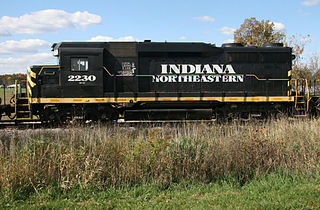
The Indiana Northeastern Railroad is a Class III short line freight railroad operating on nearly 130 miles (210 km) in southern lower Michigan, northeast Indiana and northwest Ohio. The Indiana Northeastern Railroad Company began operations in December 1992 and is an independent privately owned company. As of 2017 the railroad hauled more than 7,000 carloads per year. Commodities moved by the railroad include corn, soybeans, wheat and flour. It also handles plastics, fiberboard, aluminum, copper, coal, perlite, stone, lumber, glass, rendering products, as well as agricultural fertilizers and chemicals.

Ann Arbor–Detroit Regional Rail is a planned regional rail link along the Michigan Line between the cities of Ann Arbor and Detroit, Michigan, a total length of 39.72 miles (63.92 km). The project would connect with a proposed Detroit bus rapid transit service and the QLine streetcar.
The National Railway Historical Society (NRHS) is a non-profit organization established in 1935 in the United States to promote interest in, and appreciation for the historical development of railroads. It is headquartered in Philadelphia, Pennsylvania, and organized into 16 regions and 170 local chapters located in the United States, Canada, and the United Kingdom. The NRHS sponsors the popular RailCamp summer orientation program in partnership with Amtrak and the National Park Service, offering high school youth hands-on experience in the railroad industry.
The Steam Railroading Institute is located at 405 South Washington Street, Owosso, Michigan. It was founded in 1969 as the Michigan State University (MSU) Railroad Club. It became the Michigan State Trust for Railway Preservation, and later adopted its present name.
The Toledo Division was the southern half of the Pere Marquette Railway's main line, which ran from Ludington, Michigan to Toledo, Ohio. The Toledo Division encompassed the portion which ran from Toledo north to Saginaw, Michigan, where it met the Ludington Division. The line was built by a predecessor of the PM, the Flint & Pere Marquette, and is currently owned by CSX Transportation.
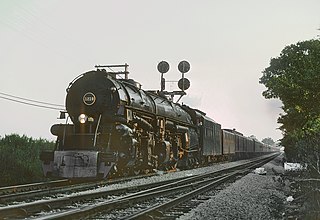
Norfolk and Western 1218 is a preserved four-cylinder simple articulated 2-6-6-4 steam locomotive, built in June 1943 by the Norfolk and Western's (N&W) East End Shops in Roanoke, Virginia as part of the N&W's class "A" fleet of fast freight locomotives. It was retired from regular revenue service in July 1959, and was later restored by Norfolk Southern for excursion service on their steam program, pulling excursions throughout the eastern United States from 1987 to 1991. It is currently on static display at the Virginia Museum of Transportation in Roanoke, Virginia.

Hamilton (HMN) is a former railroad station on Amtrak's Cardinal route between Chicago and New York City. The station in Hamilton, Ohio, was served by the Cardinal from August 1980 until October 31, 2005, when it was discontinued as a stop. Constructed by the Cincinnati, Hamilton & Dayton Railroad, the building is still owned by CSX though currently unused. It sits at the junction of the Indianapolis Subdivision with the Toledo Subdivision both part of the CSX Louisville Division, and headed south of the station the line is known as the Cincinnati Terminal Subdivision, also due to a directional running agreement most CSX and Norfolk Southern freight trains will use the Cincinnati Terminal Subdivision headed north to New River Junction in New Miami, Ohio where Norfolk Southern trains diverge to the left on the New Castle District, and CSX trains diverge to the right on the Toledo Subdivision. Now headed south towards Cincinnati most CSX and Norfolk Southern trains will diverge at the Butler St. Interlocker just blocks before the station heading south on the New Castle District. The Pennsylvania Railroad, followed by the Penn Central used another station, one on Maple Avenue, until 1971.
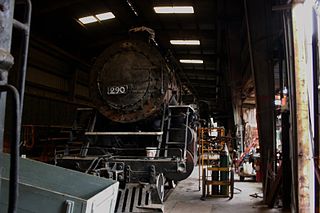
Atlanta and West Point 290 is a P-74 steam locomotive built in March 1926 by the Lima Locomotive Works (LLW) in Lima, Ohio for the Atlanta and West Point Railroad. It was a 4-6-2 heavy "Pacific" type steam locomotive, which was remarkably similar to the Southern Railway's Ps-4 class. With sister locomotive, No. 190 built for the Western Railway of Alabama (WRA), the 290 ferried the Southern Railway's Crescent passenger train from Atlanta, Georgia to West Point, Georgia until its retirement from revenue service in 1954. The No. 290 locomotive was saved by a group called the "290 Club" and was placed on static display at the city of Atlanta's Lakewood Park.
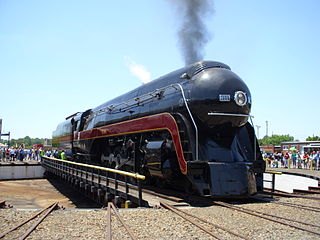
Norfolk and Western 611, also known as the "Spirit of Roanoke" and the "Queen of Steam", is a Norfolk and Western (N&W) class J 4-8-4 "Northern" streamlined steam locomotive built in May 1950 by the N&W's East End Shops in Roanoke, Virginia. It was one of the last steam passenger locomotives built in the United States and represents the pinnacle of steam locomotive technology.

SEMTA Commuter Rail, also known as the Silver Streak, was a commuter train operated by the Southeastern Michigan Transportation Authority (SEMTA) and the Grand Trunk Western Railroad between Detroit and Pontiac, Michigan. It began in 1974 when SEMTA assumed control of the Grand Trunk's existing commuter trains over the route. SEMTA discontinued operations in 1983. Amtrak began offering intercity service between Detroit and Pontiac in 1994 as part of its Michigan Services.
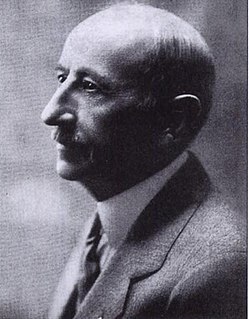
William L. Mercereau was an American design engineer and business manager of train ferries for the Pere Marquette Railway. He supervised their railroad-over-water system of train ferries as the largest carferry system in the world. His home of his fleet of steel carferries for thirty years was Ludington, Michigan. The ferries were each given a specific individual number with the name S.S. Pere Marquette.
Lake Superior and Ishpeming Railroad No. 33 is a preserved SC-1 class 2-8-0 "consolidation" type steam locomotive originally built by the Baldwin Locomotive Works in April 1916 for the Munising, Marquette and Southeastern Railway as No. 44. In 1924, the MM&SE was purchased by the Lake Superior and Ishpeming Railroad and the locomotive was renumbered to 33. It served the LS&I by pulling heavy iron ore trains until it was retired from revenue service in 1962. The following year, it was sold to the Marquette and Huron Mountain tourist railroad to operate in excursion service, but instead sat idle in Marquette. In 1965, No. 33 was purchased by the founders of the Hocking Valley Scenic Railway in Ohio. Rebuilt to operating condition, No. 33 ran on the HVSR for many years before being sidelined in 1996 for an FRA-required overhaul that couldn't be accomplished. In 2003, No. 33 was traded to the Ohio Central Railroad and was overhauled for some occasional excursion runs between 2005 and 2008. The locomotive briefly operated again around the Age of Steam Roundhouse between 2018 and 2020. As of 2022, No. 33 is sidelined, awaiting to go through a 1,472-day inspection.

Chicago and North Western 175 is a preserved standard gauge class "R-1" 4-6-0 "Ten Wheeler" type steam locomotive. Built by ALCO in 1908, the locomotive was used for pulling various passenger and freight trains throughout Wisconsin, until the Chicago and North Western Railway ended steam operations in 1957. In 1964, the locomotive was leased to Clint Jones, who had plans to use it on the Keweenaw Central Railroad for excursion service alongside Copper Range 2-8-0 No. 29, but restoration work was never completed under his ownership. After spending over four decades in outdoor storage in Hancock, Michigan, No. 175 was purchased in 2018 by the Steam Railroading Institute, who moved to their location in Owosso, Michigan, and they are currently rebuilding the locomotive to serve as a running mate to Pere Marquette 2-8-4 No. 1225.

Savannah and Atlanta 750, formerly Florida East Coast 80, is a 4-6-2 “Light Pacific” steam locomotive built in January 1910 by the American Locomotive Company (ALCO) of Schenectady, New York, originally for the Florida East Coast Railway (FEC) as No. 80. Throughout the 1930s, FEC had sold of several of their locomotives, with No. 80 being sold in 1935 to the Savannah and Atlanta Railway, where it was renumbered to 750. The locomotive pulled commuter passenger trains and occasional mixed freight trains for the S&A, until the railroad dieselized in the early 1950s. In 1962, the locomotive was donated to the Atlanta Chapter of the National Railway Historical Society, who began using the locomotive to pull occasional excursion trains. No. 750 was subsequently leased to the Southern Railway for use to pull trains for their new steam excursion program, and the lease ended in 1984. From 1985 to 1989, the locomotive pulled excursion trains for the New Georgia Railroad around Atlanta, until it was retired, due to firebox issues. As of 2022, No. 750 remains on static display inside the Southeastern Railway Museum in Duluth, Georgia.
References
- ↑ NRHS webpage on Bluewater at http://www.nrhs.com/chapters/bluewater_michigan.htm
- ↑ Laepple, Wayne (9 July 2019). "Bluewater NRHS winds down operations; will close at end of year NEWSWIRE". Trains Magazine. Retrieved 26 June 2021.
- ↑ "Railroad Society". The Clinton Local. March 22, 1984.
- ↑ "Ft. Wayne Flyer Rides Again". The Clinton Local. June 21, 1984.
- ↑ Project 1225 Newsletter, Number 75, October 1988.
- ↑ "Bluewater Services". Archived from the original on 2008-12-27. Retrieved 2008-12-21.